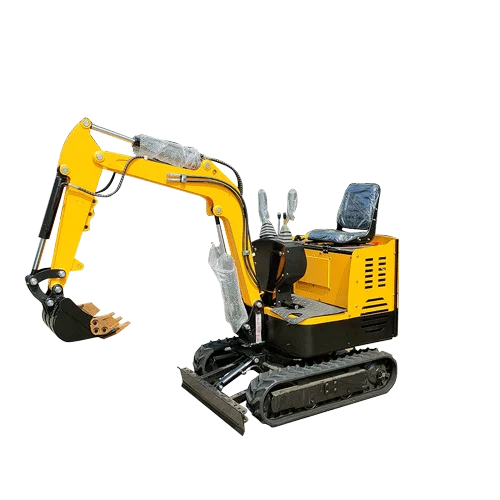Welcome to My Blog!
Before we dive into the content, I’d love for you to join me on my social media platforms where I share more insights, engage with the community, and post updates. Here’s how you can connect with me:
Facebook:https://www.facebook.com/profile.php?id=100087112105480
LinkedIn:https://www.linkedin.com/showcase/99327366/admin/dashboard/
Now, let’s get started on our journey together. I hope you find the content here insightful, engaging, and valuable.
Table of Contents
Introduction
When it comes to construction, landscaping, and excavation work, choosing the right equipment for your needs is crucial to project success. Two popular machines that are often compared are the skid steer and the mini excavator. Both are versatile, compact, and well-suited for tight spaces, but their capabilities, applications, and advantages can differ significantly.
In this article, we will dive deep into the features, differences, and advantages of a skid steer vs mini excavator, providing insights that will help you make an informed decision on which machine to choose based on your specific requirements. From maneuverability to digging capacity, we’ll cover everything you need to know.
What Is a Skid Steer?


A skid steer is a small, highly maneuverable construction vehicle with a rigid frame and lift arms. It is typically used for tasks such as digging, lifting, and transporting material. Skid steers are equipped with a variety of attachments, allowing operators to customize the machine to perform different tasks efficiently.
Key Features of Skid Steers:
- Compact Size: Skid steers are known for their small size, making them ideal for working in tight spaces or crowded job sites.
- Versatility: With a wide range of attachments, skid steers can perform multiple tasks like excavation, grading, trenching, and material handling.
- Maneuverability: They have a unique wheeled design that allows them to turn in place, making them highly agile on the job site.
Applications of Skid Steers:
- Landscaping: Skid steers are commonly used for landscaping jobs, such as digging, grading, and material transport.
- Construction: These machines are used on construction sites for trenching, material handling, and lifting.
- Agriculture: Skid steers are also used in agriculture for tasks like cleaning barns, loading feed, and spreading mulch.
What Is a Mini Excavator?

A mini excavator, also known as a compact excavator, is a smaller version of a traditional crawler excavator. It is designed for digging, grading, and demolition in confined spaces. Mini excavators have tracks instead of wheels, which provide better traction and stability, especially on uneven terrain.
Key Features of Mini Excavators:
- Track Design: Mini excavators are equipped with tracks, providing superior stability and less ground disturbance compared to wheeled machines.
- Hydraulic System: They come with powerful hydraulic systems, allowing them to dig, lift, and rotate with precision.
- Compact Size: Despite their powerful capabilities, mini excavators are compact enough to navigate narrow paths and confined spaces.
Applications of Mini Excavators:
- Excavation: Mini excavators are primarily used for digging, trenching, and excavating tasks in construction and landscaping.
- Demolition: Due to their power and precision, mini excavators are used for demolition and breaking down structures in tight areas.
- Utility Work: Mini excavators are ideal for utility installation and repair, including plumbing, electrical, and drainage systems.
Skid Steer vs Mini Excavator: Key Differences
When deciding between a skid steer and a mini excavator, it’s essential to consider several key factors that distinguish these two machines. Below is a breakdown of the most important differences to help you choose the right equipment for your job.
Maneuverability and Size
Skid steers have a clear advantage in terms of maneuverability. They are highly agile and can turn in place, which makes them ideal for confined spaces. Mini excavators, on the other hand, are larger and have a track system that offers stability but may limit maneuverability in very tight areas.
- Skid Steer: Best for confined spaces and tight turns.
- Mini Excavator: Better suited for tasks that require digging or lifting on uneven terrain.
Digging Capabilities
When it comes to digging, the mini excavator has the upper hand. Its hydraulic system provides precise control and allows for deep digging, making it ideal for excavation tasks. Skid steers can dig, but their digging depth is not as significant as that of a mini excavator.
- Skid Steer: Good for shallow digging and grading.
- Mini Excavator: Excellent for deep excavation, trenching, and demolition.
Lift and Load Capacity
Skid steers are designed for material handling and lifting tasks. With the right attachment, they can lift heavy loads and move materials efficiently. Mini excavators, while capable of lifting, are primarily designed for digging and earth-moving operations, with a lower lift capacity than skid steers.
- Skid Steer: Excellent for lifting and moving materials.
- Mini Excavator: Focused more on digging and excavation, with lower lifting capacity.
Versatility
Skid steers are highly versatile due to their wide range of available attachments. From buckets to augers and pallet forks, a skid steer can handle a variety of tasks, making it ideal for multi-purpose jobs. Mini excavators are specialized for digging and earth-moving, with fewer attachment options.
- Skid Steer: Highly versatile with a variety of attachments.
- Mini Excavator: Primarily specialized for excavation and digging.
Terrain Capability
Mini excavators, with their tracked design, are better equipped to handle rough or uneven terrain. The tracks distribute the machine’s weight more evenly, reducing ground pressure and providing better traction. Skid steers, which use wheels, may struggle in muddy or unstable conditions.
- Skid Steer: Ideal for flat, stable terrain but may struggle on uneven ground.
- Mini Excavator: Better suited for rough, uneven, or muddy terrain due to its tracked design.
Skid Steer vs Mini Excavator: A Comparison Table
| Feature | Skid Steer | Mini Excavator |
|---|---|---|
| Size | Compact, small enough for tight spaces | Compact, but larger than a skid steer |
| Maneuverability | Turns in place, highly maneuverable | Less maneuverable in tight spaces |
| Digging Depth | Shallow digging | Deep digging capabilities |
| Lifting Capacity | High lifting capacity | Lower lifting capacity |
| Versatility | Highly versatile with attachments | Specialized for digging and excavation |
| Terrain Handling | Struggles on rough terrain | Excellent on rough, uneven terrain |
| Primary Use | Material handling, grading, lifting | Excavation, trenching, demolition |
Choosing the Right Machine: Skid Steer or Mini Excavator?

Choosing between a skid steer and a mini excavator largely depends on the type of project you’re working on and the specific tasks that need to be completed. Below are a few scenarios to help you decide which machine best fits your needs.
When to Choose a Skid Steer:
- Material Handling: If your primary task involves moving materials, lifting, or grading, a skid steer is an excellent choice due to its higher lifting capacity and versatility with attachments.
- Landscaping and Construction: For jobs that require maneuverability in tight spaces and versatility, a skid steer will perform well.
- Light Excavation: If you’re digging shallow trenches or doing small excavation work, a skid steer equipped with the right attachment can get the job done.
When to Choose a Mini Excavator:
- Deep Excavation: For tasks that require deep digging, trenching, or precise earth-moving, a mini excavator is the superior choice.
- Rough Terrain: If you’re working on uneven or unstable terrain, the tracks on a mini excavator will provide superior traction and stability.
- Demolition Work: For demolition tasks in tight spaces, a mini excavator’s powerful hydraulics and precise control make it ideal for breaking down structures.
Conclusion
Both skid steers and mini excavators offer unique advantages that can benefit various construction, landscaping, and excavation projects. If you require versatility, material handling, and the ability to work in tight spaces, a skid steer is an excellent choice. On the other hand, if your project involves deep digging, trenching, or working in rough terrain, a mini excavator will likely serve you better.
Ultimately, the choice between a skid steer and a mini excavator comes down to the specific needs of your project. Understanding the strengths and limitations of each machine will allow you to make an informed decision that ensures your job gets done efficiently and effectively.
FAQ
Which is better for digging, a skid steer or a mini excavator?
A mini excavator is better for digging, especially for deep excavation and precise digging tasks. Skid steers are more suitable for shallow digging and grading.
Can a skid steer lift heavy loads?
Yes, skid steers are excellent for lifting and handling heavy materials, thanks to their higher lifting capacity compared to mini excavators.
What is the primary advantage of a mini excavator over a skid steer?
The primary advantage of a mini excavator is its ability to dig deeply and handle rough terrain with ease due to its tracked design and powerful hydraulic system.
Are skid steers more versatile than mini excavators?
Yes, skid steers are more versatile because they can accommodate a wide range of attachments, making them suitable for various tasks beyond excavation.
Which machine is better for tight spaces, a skid steer or a mini excavator?
A skid steer is better for tight spaces due to its ability to turn in place and its compact size, making it ideal for working in confined areas.
